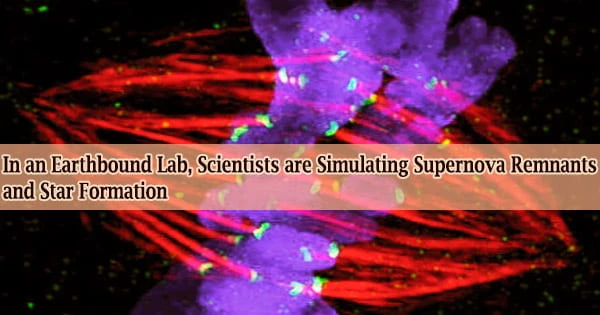Molecular clouds are space-based groupings of gas and dust. The clouds maintain their tranquil equilibrium when left alone.
Shockwaves can propagate through the gas and dust to generate pockets of dense material when activated by an external cause, such as supernova leftovers. That dense gas and dust eventually collapses and begins to generate new stars.
Numerical calculations can’t handle the intricacy of the interaction between clouds and supernova leftovers, and astronomical measurements don’t have adequate spatial resolution to see these processes.
As a result, the triggering and production of new stars in this manner is mostly unknown.
In Matter and Radiation at Extremes, by AIP Publishing in partnership with China Academy of Engineering Physics, researchers from the Polytechnic Institute of Paris, the Free University of Berlin, the Joint Institute for High Temperatures of the Russian Academy of Sciences, the Moscow Engineering Physics Institute, the French Alternative Energies, and Atomic Energy Commission, the University of Oxford, and Osaka University modeled the interaction between supernova remnants and molecular clouds using a high-power laser and a foam ball.
Our primitive molecular cloud, where the sun was formed, was probably triggered by supernova remnants. This experiment opens a new and promising path for laboratory astrophysics to understand all these major points.
Bruno Albertazzi
A dense area within a molecular cloud is represented by the foam ball. The high-powered laser emits a blast wave that travels through a gaseous environment and into the ball, where the compression was witnessed using X-ray imaging.
“We are really looking at the beginning of the interaction,” said author Bruno Albertazzi. “In this way, you can see if the average density of the foam increases and if you will begin to form stars more easily.”
The mechanisms that cause star formation are fascinating on many levels. They have the potential to influence the rate and evolution of star formation in a galaxy, as well as explain the formation of the most massive stars and have implications in our own solar system.
“Our primitive molecular cloud, where the sun was formed, was probably triggered by supernova remnants,” said author Albertazzi. “This experiment opens a new and promising path for laboratory astrophysics to understand all these major points.”
Some of the foam crushed, while others extended out. Because the material’s average density was altered, the authors will need to account for the stretched mass in the future to accurately evaluate the compressed material and the shockwave’s impact on star formation. Radiation, the magnetic field, and turbulence will all be investigated.
“This first paper was really to demonstrate the possibilities of this new platform opening a new topic that could be investigated using high-power lasers,” said Albertazzi.





